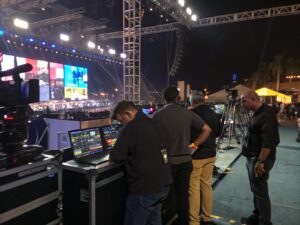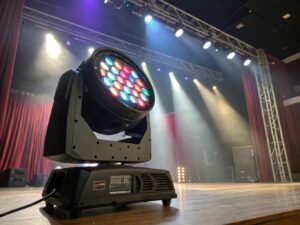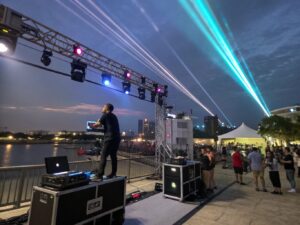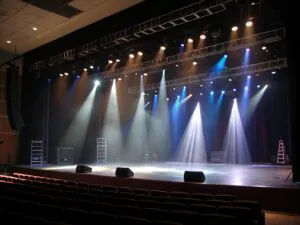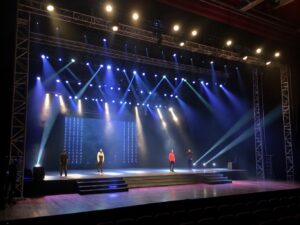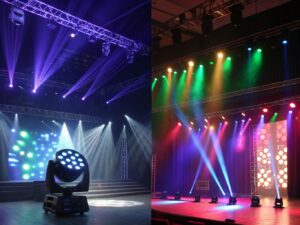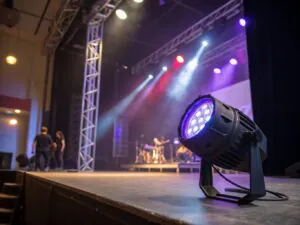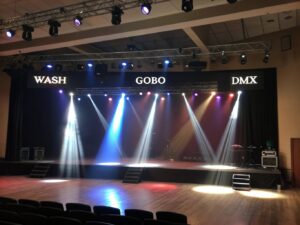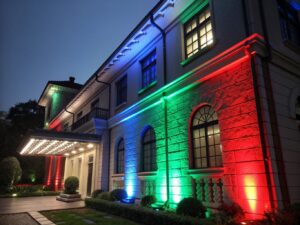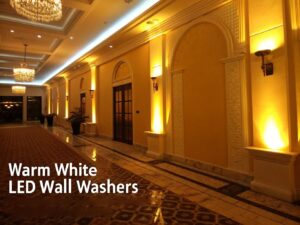
Feeling overwhelmed by the sheer variety of lights available? Choosing the wrong instrument can compromise your design and waste precious setup time. Let's get a clear overview of the essentials.
Key stage lighting instruments1 include PAR cans for washes, Lekos (Ellipsoidals) for sharp spots, Fresnels for soft-edged light, and moving heads for dynamic effects. Each is a specific tool designed for a particular job, from general illumination to creating dramatic, focused highlights.

I've seen countless rigs over my 19 years in this industry, from small club stages to massive arena shows. While the technology has exploded, the core functions of these instruments remain the same. Understanding the "what" and "why" behind each one is the key to mastering your craft as a technician. It's about having the right tool for the right job. Let's dig into the specific families of equipment that form the backbone of any professional stage design.
What are the different types of stage lighting equipment?
Your lighting plot is full, but does it have the right mix? Using only one type of light creates a flat, boring look. You need a diverse toolkit to build depth.
Stage lighting equipment is grouped into three main categories: conventional fixtures2 (like PARs), automated or intelligent lights3 (moving heads), and effects (strobes, hazers). This classification helps you design a versatile rig that can handle both static scenes and dynamic movements.

Thinking in categories helps simplify your design process. In my experience, a great lighting design almost always uses a blend of these types. Conventional lights are your foundation. They are the reliable workhorses for tasks like a general stage wash or a fixed special on a presenter. Then, you layer in the automated lights. These are your creative powerhouses that bring movement, texture, and excitement to the show. Finally, you add the effects to punctuate key moments. At Monalight, we manufacture fixtures in all these categories because we know a technician needs a complete palette to paint with light. A balanced rig gives you the flexibility to create any look you or the designer can imagine.
Major Equipment Categories
| Category | Primary Function | Common Examples |
|---|---|---|
| Conventional | Static illumination, fixed focus | LED PAR Cans, Ellipsoidals, Fresnels |
| Automated | Dynamic movement, color, and pattern | Moving Head Spot, Wash, or Beam |
| Effects | Atmosphere and impact | Strobes, Blinders, Haze/Fog Machines |
What is a lighting instrument in theatre?
Is it a "light," a "fixture," or a "luminaire?" Getting the terms right matters for clear communication with your crew. What truly defines a theatrical lighting instrument?
In theatre, a lighting instrument is any device that produces controlled light for the stage. It's more than just a light bulb; it includes the housing, lens, reflector4, and mounting hardware. Each instrument is a precision tool designed for a specific lighting task.

I always encourage new technicians to use the term "instrument." It reinforces the idea that we are using precise tools, not just generic floodlights. Like a surgeon's scalpel or a musician's guitar, each lighting instrument has a specific purpose and character. The quality of its components directly impacts its performance. A well-designed instrument gives you predictable, controllable light. This is why we focus so heavily on the details in our Monalight fixtures. The type of reflector dictates the beam shape, the lens quality affects the sharpness of the focus, and the housing ensures durability and proper heat management. Understanding this "anatomy of an instrument" helps you choose the perfect one for the effect you want to achieve, whether it's a tight, hard-edged spot or a soft, diffuse wash.
Core Components of an Instrument
| Component | Function |
|---|---|
| Light Source | Generates the light (LED Engine, Tungsten Lamp). |
| Reflector | Gathers and shapes the light towards the lens. |
| Lens System | Focuses the light into a usable beam. |
| Housing & Yoke | Protects the components and provides a mounting point. |
What do I need for stage lighting?
You have a stage, but what do you actually need to light it? Buying gear without a plan is a costly mistake. Let's build your essential toolkit from the ground up.
For a basic stage lighting system, you need four key things: lighting instruments1, a mounting structure (like a truss), control systems (cabling and power), and a lighting controller. These are the foundational pillars for any setup, from a small conference to a rock concert.

Every complete lighting system, no matter the size, is built on these four pillars. I've seen people spend a fortune on amazing lights but forget they need a solid way to hang them or a good console to control them. You have to think of it as a complete system. First, choose your instruments based on what you need to do—washes, spots, etc. Second, determine how you'll safely rig them above the stage using trusses or stands. Third, plan your data and power. This means running DMX cables to every light and ensuring you have enough power circuits to handle the load. I can't stress this enough: bad power distribution is a show-killer. Finally, select a controller that fits the complexity of your show. A simple fader board might work for a basic play, but you'll want software or a dedicated console for programming a dynamic music show.
System Needs: Small vs. Large Venue
| System Pillar | Small Venue (e.g., Club) | Large Venue (e.g., Theatre) |
|---|---|---|
| Instruments | LED PARs, a few Lekos | A large mix of PARs, Lekos, Moving Heads |
| Structure | Tripod Stands, small goalpost truss | Extensive flown truss system |
| Control | Direct DMX cables, wall power | DMX nodes, network control, power distros |
| Controller | PC software, simple hardware desk | Professional lighting console |
What are the 4 types of lighting?
Your stage is lit, but does it have depth and focus? Just blasting the stage with front light makes everything look flat. You need to use light direction to create a three-dimensional look.
The four functional types of lighting are Key Light (main source), Fill Light (softens shadows), Back Light (creates separation), and Background Light (illuminates the set). This framework, based on classic three-point lighting, is the art behind the science.

This is where a technician becomes a designer. It's not about the gear anymore; it's about what you do with it. I've seen artists look absolutely stunning under a simple four-point lighting setup. The Key Light is your main light source, defining the angle and visible shape of the subject. But this creates harsh shadows. So, you add a Fill Light from another angle, usually with a softer fixture, to reduce that contrast and make sure the camera or audience can see the subject's features. The real magic for me is the Back Light. It hits the subject from behind, creating a subtle halo of light on their head and shoulders. This simple trick makes them "pop" right off the background. Finally, the Background Light illuminates the set and scenery, giving the entire view depth and context. Mastering this technique is fundamental to good lighting.
Functional Lighting Types
| Light Type | Purpose | Common Instrument Choice |
|---|---|---|
| Key Light | Main source of illumination on the subject. | Ellipsoidal (Leko), Moving Head Spot |
| Fill Light | Softens the shadows created by the Key Light. | Fresnel, LED PAR (with diffusion) |
| Back Light | Separates the subject from the background. | LED PAR, Small Moving Head |
| Background Light | Illuminates the set and adds environmental color/texture. | LED Battens, Cyc Lights, Gobos |
Conclusion
Understanding the different instruments and their functions is your first step. Combining these tools with solid, four-point lighting techniques will transform your stage from simply lit to truly alive.
-
Delve into the definition of lighting instruments and their importance in theatrical lighting design. ↩ ↩
-
Understand the role of conventional fixtures like PARs in providing reliable static illumination. ↩
-
Explore the benefits of automated lights for dynamic movement and exciting visual effects. ↩
-
Understand how reflectors shape and direct light, crucial for achieving desired effects. ↩
You may also be interested in:
